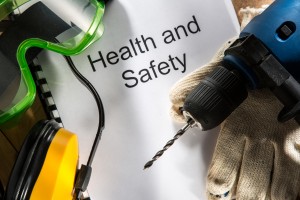
So how do you create a culture of safety and what does it mean for your company?
With a strong safety culture, everyone from top to bottom feels a sense of responsibility for safe practices and procedures. By educating your organization about your safety policies, how to identify unsafe working situations or scenarios, and how to intervene to correct those issues, you are empowering everyone to take safety into their own hands. Your entry-level crew member should feel comfortable telling the project manager, superintendent, architect, or customer to make sure they are wearing their safety glasses or hard hats. Your team should always be looking out for each other and keeping job sites or work areas as safe as they can be. Just like as it says on the back of our uniform shirts “safety is no accident”.
Employing a strong safety culture typically results in lowered at-risk behaviors, which in-turn means low accident rates, fewer injuries, less time-loss, and higher productivity.
How to get started?
- The Safety Director: The first step is hiring a Safety Director. If you have one already, then you’re on the right path! Create a strategic plan of action with your Safety Director to establish benchmark statistics and build safety goals based upon measurable activities which work towards those goals. Over time you want to see a shift in focus. No longer should the emphasis be simply on eliminating hazards, it should shift towards building systems which proactively improve the safety culture.
- The Strategic Plan: Once your Safety Director has established a plan of action, it’s time to get your front-line on board. Having the buy-in from your team makes this process easier and will help to effectively implement change. Start by educating your management team and supervisory staff. You might also start a Health and Safety Committee. This core group will help with trainings, communication, and team education. At Trisco Systems, our Safety Committee includes members from all departments and levels of the company because a safety culture must come from within the entire organization.
- Policy & Vision: Create a formal policy and develop a safety vision. Once you’ve created your policy share it. It sounds simple enough, but it can be difficult for others to understand it or pay attention to it. Give a formal presentation to your organization. Provide additional materials if needed, and then set-up trainings for your management team to share with your work crews and front-line staff. Educate your team on identifying hazards, how to address them and the proper procedures to report any issues if necessary. Developing a system of accountability for all levels of the business will keep safety top of mind for everyone.
- Recognition: Create an incentive program and reward your employees for doing the right things and encourage participation.
- Continuous Improvement: Once you’ve rolled out your plan, continue to offer training programs and education. Ask your team for feedback. Always be looking for ways to continue to improve your efforts.
Creating a culture of safety will ultimately keep your employees safe, your team efficient, and your business productivity and bottom-line strong. Most importantly, your employees whom may spend more time with you than they do with their families, will go home from work the same way they left for work.
Sources: OSHA.gov, “Creating a Safety Culture”
McGraw-Hill/Irwin, McShane Von Glinow, “Organizational Behavior”, 5e
